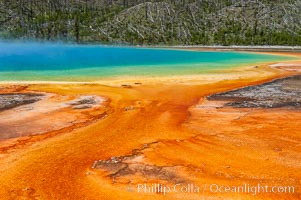
Grand Prismatic Spring displays brilliant colors along its edges, created by species of thermophilac (heat-loving) bacteria that thrive in narrow temperature ranges. The outer orange and red regions are the coolest water in the spring, where the overflow runs off.
Location: Midway Geyser Basin, Yellowstone National Park, Wyoming
Image ID: 07265
Location: Midway Geyser Basin, Yellowstone National Park, Wyoming
Image ID: 07265
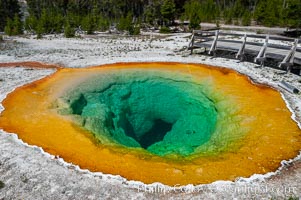
Morning Glory Pool has long been considered a must-see site in Yellowstone. At one time a road brought visitors to its brink. Over the years they threw coins, bottles and trash in the pool, reducing its flow and causing the red and orange bacteria to creep in from its edge, replacing the blue bacteria that thrive in the hotter water at the center of the pool. The pool is now accessed only by a foot path. Upper Geyser Basin.
Location: Upper Geyser Basin, Yellowstone National Park, Wyoming
Image ID: 07268
Location: Upper Geyser Basin, Yellowstone National Park, Wyoming
Image ID: 07268
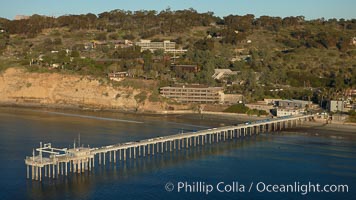
SIO Pier. The Scripps Institution of Oceanography research pier is 1090 feet long and was built of reinforced concrete in 1988, replacing the original wooden pier built in 1915. The Scripps Pier is home to a variety of sensing equipment above and below water that collects various oceanographic data. The Scripps research diving facility is located at the foot of the pier. Fresh seawater is pumped from the pier to the many tanks and facilities of SIO, including the Birch Aquarium. The Scripps Pier is named in honor of Ellen Browning Scripps, the most significant donor and benefactor of the Institution.
Location: Scripps Institution of Oceanography, La Jolla, California
Image ID: 22293
Location: Scripps Institution of Oceanography, La Jolla, California
Image ID: 22293
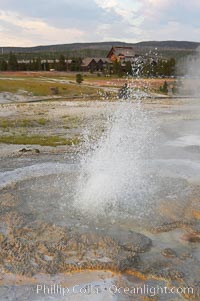
Anemone Geyser erupts, Old Faithful Inn visible in the distance. Anemone Geyser cycles about every 7 minutes. First the pools fills, then overflows, then bubbles and splashes before erupting. The eruption empties the pools and the cycle begins anew. Upper Geyser Basin.
Location: Upper Geyser Basin, Yellowstone National Park, Wyoming
Image ID: 13394
Location: Upper Geyser Basin, Yellowstone National Park, Wyoming
Image ID: 13394
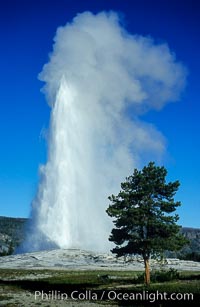
Old Faithful geyser, peak eruption.
Location: Upper Geyser Basin, Yellowstone National Park, Wyoming
Image ID: 07179
Location: Upper Geyser Basin, Yellowstone National Park, Wyoming
Image ID: 07179
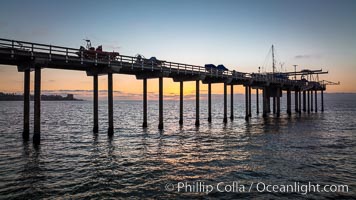
SIO Pier. The Scripps Institution of Oceanography research pier is 1090 feet long and was built of reinforced concrete in 1988, replacing the original wooden pier built in 1915. The Scripps Pier is home to a variety of sensing equipment above and below water that collects various oceanographic data. The Scripps research diving facility is located at the foot of the pier. Fresh seawater is pumped from the pier to the many tanks and facilities of SIO, including the Birch Aquarium. The Scripps Pier is named in honor of Ellen Browning Scripps, the most significant donor and benefactor of the Institution.
Location: Scripps Institution of Oceanography, La Jolla, California
Image ID: 38023
Location: Scripps Institution of Oceanography, La Jolla, California
Image ID: 38023
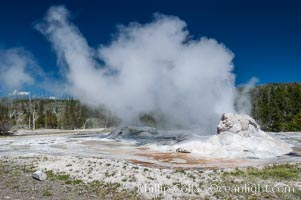
Grotto Geyser, Yellowstone National Park.
Location: Upper Geyser Basin, Yellowstone National Park, Wyoming
Image ID: 07204
Location: Upper Geyser Basin, Yellowstone National Park, Wyoming
Image ID: 07204
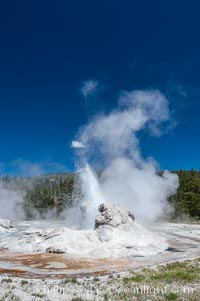
Grotto Geyser, Yellowstone National Park.
Location: Upper Geyser Basin, Yellowstone National Park, Wyoming
Image ID: 07206
Location: Upper Geyser Basin, Yellowstone National Park, Wyoming
Image ID: 07206
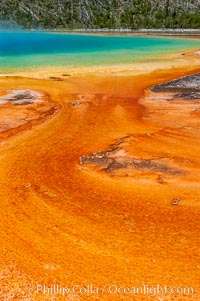
Grand Prismatic Spring displays brilliant colors along its edges, created by species of thermophilac (heat-loving) bacteria that thrive in narrow temperature ranges. The outer orange and red regions are the coolest water in the spring, where the overflow runs off.
Location: Midway Geyser Basin, Yellowstone National Park, Wyoming
Image ID: 07264
Location: Midway Geyser Basin, Yellowstone National Park, Wyoming
Image ID: 07264
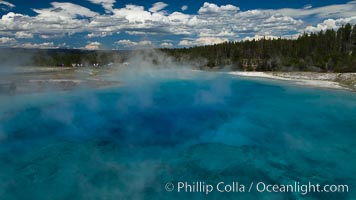
Excelsior Geyser, now dormant, was formerly the worlds largest geyser. It still produces immense runoff into the Firehole River: 4,500 gallons per minute, or 6 million gallons per day. It is located in Midway Geyser Basin.
Location: Midway Geyser Basin, Yellowstone National Park, Wyoming
Image ID: 26953
Location: Midway Geyser Basin, Yellowstone National Park, Wyoming
Image ID: 26953
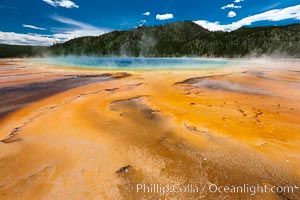
Bacteria mats and Grand Prismatic Spring. The orange color is due to bacteria which thrive only on the cooler fringes of the hot spring, while the hotter center of the spring hosts blue-colored bacteria.
Location: Midway Geyser Basin, Yellowstone National Park, Wyoming
Image ID: 26954
Location: Midway Geyser Basin, Yellowstone National Park, Wyoming
Image ID: 26954
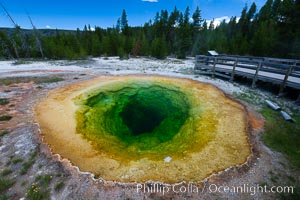
Morning Glory Pool, has long been considered a must-see site in Yellowstone. At one time a road brought visitors to its brink. Over the years they threw coins, bottles and trash in the pool, reducing its flow and causing the red and orange bacteria to creep in from its edge, replacing the blue bacteria that thrive in the hotter water at the center of the pool. The pool is now accessed only by a foot path.
Location: Upper Geyser Basin, Yellowstone National Park, Wyoming
Image ID: 26955
Location: Upper Geyser Basin, Yellowstone National Park, Wyoming
Image ID: 26955
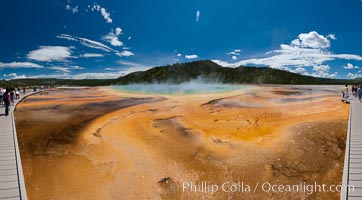
Bacteria mats and Grand Prismatic Spring. The orange color is due to bacteria which thrive only on the cooler fringes of the hot spring, while the hotter center of the spring hosts blue-colored bacteria.
Location: Midway Geyser Basin, Yellowstone National Park, Wyoming
Image ID: 26958
Panorama dimensions: 4624 x 8376
Location: Midway Geyser Basin, Yellowstone National Park, Wyoming
Image ID: 26958
Panorama dimensions: 4624 x 8376
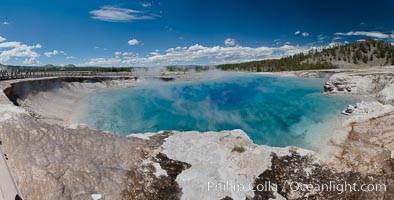
Panorama of Excelsior Geyser, now dormant, was formerly the worlds largest geyser. It still produces immense runoff into the Firehole River: 4,500 gallons per minute, or 6 million gallons per day. It is located in Midway Geyser Basin.
Location: Midway Geyser Basin, Yellowstone National Park, Wyoming
Image ID: 26959
Panorama dimensions: 5188 x 10216
Location: Midway Geyser Basin, Yellowstone National Park, Wyoming
Image ID: 26959
Panorama dimensions: 5188 x 10216
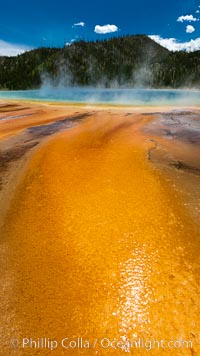
Bacteria mats and Grand Prismatic Spring. The orange color is due to bacteria which thrive only on the cooler fringes of the hot spring, while the hotter center of the spring hosts blue-colored bacteria.
Location: Midway Geyser Basin, Yellowstone National Park, Wyoming
Image ID: 26964
Location: Midway Geyser Basin, Yellowstone National Park, Wyoming
Image ID: 26964
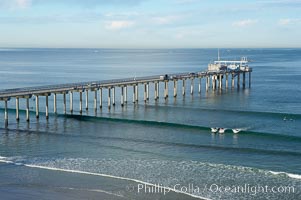
The Scripps Institution of Oceanography research pier is 1090 feet long and was built of reinforced concrete in 1988, replacing the original wooden pier built in 1915. The Scripps Pier is home to a variety of sensing equipment above and below water that collects various oceanographic data. The Scripps research diving facility is located at the foot of the pier. Fresh seawater is pumped from the pier to the many tanks and facilities of SIO, including the Birch Aquarium. The Scripps Pier is named in honor of Ellen Browning Scripps, the most significant donor and benefactor of the Institution.
Location: Scripps Institution of Oceanography, La Jolla, California
Image ID: 14748
Location: Scripps Institution of Oceanography, La Jolla, California
Image ID: 14748
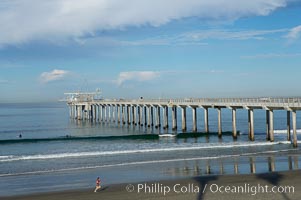
The Scripps Institution of Oceanography research pier is 1090 feet long and was built of reinforced concrete in 1988, replacing the original wooden pier built in 1915. The Scripps Pier is home to a variety of sensing equipment above and below water that collects various oceanographic data. The Scripps research diving facility is located at the foot of the pier. Fresh seawater is pumped from the pier to the many tanks and facilities of SIO, including the Birch Aquarium. The Scripps Pier is named in honor of Ellen Browning Scripps, the most significant donor and benefactor of the Institution.
Location: Scripps Institution of Oceanography, La Jolla, California
Image ID: 14749
Location: Scripps Institution of Oceanography, La Jolla, California
Image ID: 14749
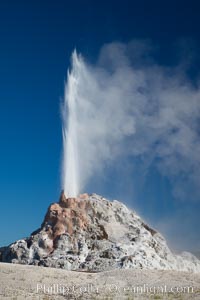
White Dome Geyser, rises to a height of 30 feet or more, and typically erupts with an interval of 15 to 30 minutes. It is located along Firehole Lake Drive.
Location: Lower Geyser Basin, Yellowstone National Park, Wyoming
Image ID: 26938
Location: Lower Geyser Basin, Yellowstone National Park, Wyoming
Image ID: 26938
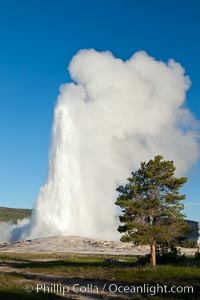
Old Faithful geyser, sunrise. Reaching up to 185' in height and lasting up to 5 minutes, Old Faithful geyser is the most famous geyser in the world and the first geyser in Yellowstone to be named.
Location: Upper Geyser Basin, Yellowstone National Park, Wyoming
Image ID: 26940
Location: Upper Geyser Basin, Yellowstone National Park, Wyoming
Image ID: 26940
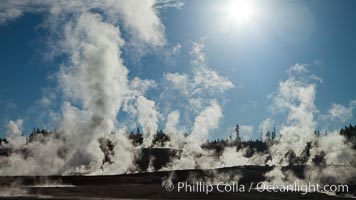
Steam rises at sunrise in Norris Geyser Basin. Located at the intersection of three tectonic faults, Norris Geyser Basin is the hottest and most active geothermal area in Yellowstone National Park.
Location: Norris Geyser Basin, Yellowstone National Park, Wyoming
Image ID: 26943
Location: Norris Geyser Basin, Yellowstone National Park, Wyoming
Image ID: 26943
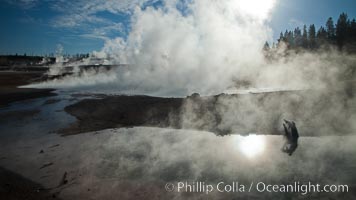
Steam rises at sunrise in Norris Geyser Basin. Located at the intersection of three tectonic faults, Norris Geyser Basin is the hottest and most active geothermal area in Yellowstone National Park.
Location: Norris Geyser Basin, Yellowstone National Park, Wyoming
Image ID: 26944
Location: Norris Geyser Basin, Yellowstone National Park, Wyoming
Image ID: 26944
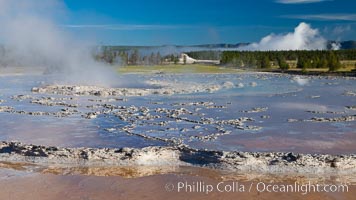
Great Fountain geyser. Great Fountain geyser's large vent (16 feet across) sits amid wide sinter terraces that act as reflecting pools as the geyser slows fills prior to its eruption.
Location: Lower Geyser Basin, Yellowstone National Park, Wyoming
Image ID: 26948
Location: Lower Geyser Basin, Yellowstone National Park, Wyoming
Image ID: 26948
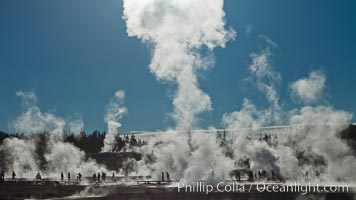
Steam rises at sunrise in Norris Geyser Basin. Located at the intersection of three tectonic faults, Norris Geyser Basin is the hottest and most active geothermal area in Yellowstone National Park.
Location: Norris Geyser Basin, Yellowstone National Park, Wyoming
Image ID: 26951
Location: Norris Geyser Basin, Yellowstone National Park, Wyoming
Image ID: 26951
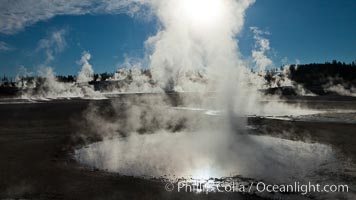
Steam rises at sunrise in Norris Geyser Basin. Located at the intersection of three tectonic faults, Norris Geyser Basin is the hottest and most active geothermal area in Yellowstone National Park.
Location: Norris Geyser Basin, Yellowstone National Park, Wyoming
Image ID: 26952
Location: Norris Geyser Basin, Yellowstone National Park, Wyoming
Image ID: 26952
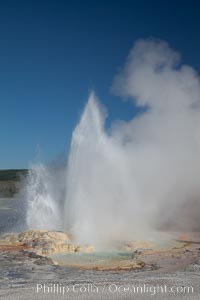
Clepsydra Geyser, a geyser which is almost continually erupting. A member of the Fountain Group of geothermal features.
Location: Lower Geyser Basin, Yellowstone National Park, Wyoming
Image ID: 26961
Location: Lower Geyser Basin, Yellowstone National Park, Wyoming
Image ID: 26961
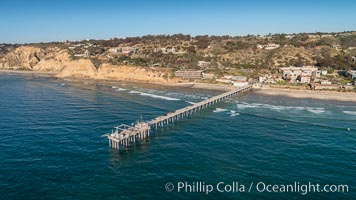
Aerial Photo of Scripps Pier. SIO Pier. The Scripps Institution of Oceanography research pier is 1090 feet long and was built of reinforced concrete in 1988, replacing the original wooden pier built in 1915. The Scripps Pier is home to a variety of sensing equipment above and below water that collects various oceanographic data. The Scripps research diving facility is located at the foot of the pier. Fresh seawater is pumped from the pier to the many tanks and facilities of SIO, including the Birch Aquarium. The Scripps Pier is named in honor of Ellen Browning Scripps, the most significant donor and benefactor of the Institution.
Image ID: 30739
Image ID: 30739
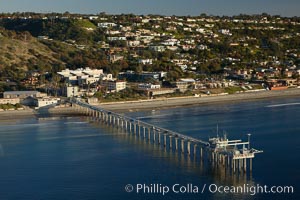
SIO Pier. The Scripps Institution of Oceanography research pier is 1090 feet long and was built of reinforced concrete in 1988, replacing the original wooden pier built in 1915. The Scripps Pier is home to a variety of sensing equipment above and below water that collects various oceanographic data. The Scripps research diving facility is located at the foot of the pier. Fresh seawater is pumped from the pier to the many tanks and facilities of SIO, including the Birch Aquarium. The Scripps Pier is named in honor of Ellen Browning Scripps, the most significant donor and benefactor of the Institution.
Location: Scripps Institution of Oceanography, La Jolla, California
Image ID: 22313
Location: Scripps Institution of Oceanography, La Jolla, California
Image ID: 22313
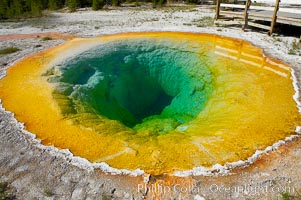
Morning Glory Pool has long been considered a must-see site in Yellowstone. At one time a road brought visitors to its brink. Over the years they threw coins, bottles and trash in the pool, reducing its flow and causing the red and orange bacteria to creep in from its edge, replacing the blue bacteria that thrive in the hotter water at the center of the pool. The pool is now accessed only by a foot path. Upper Geyser Basin.
Location: Upper Geyser Basin, Yellowstone National Park, Wyoming
Image ID: 13353
Location: Upper Geyser Basin, Yellowstone National Park, Wyoming
Image ID: 13353
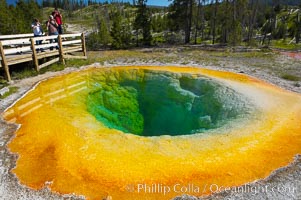
Morning Glory Pool has long been considered a must-see site in Yellowstone. At one time a road brought visitors to its brink. Over the years they threw coins, bottles and trash in the pool, reducing its flow and causing the red and orange bacteria to creep in from its edge, replacing the blue bacteria that thrive in the hotter water at the center of the pool. The pool is now accessed only by a foot path. Upper Geyser Basin.
Location: Upper Geyser Basin, Yellowstone National Park, Wyoming
Image ID: 13354
Location: Upper Geyser Basin, Yellowstone National Park, Wyoming
Image ID: 13354
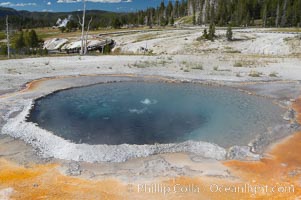
Crested Pool is a blue, superheated pool. Unfortunately, it has claimed a life. It reaches a overflowing boiling state every few minutes, then subsides a bit before building to a boil and overflow again. Upper Geyser Basin.
Location: Upper Geyser Basin, Yellowstone National Park, Wyoming
Image ID: 13356
Location: Upper Geyser Basin, Yellowstone National Park, Wyoming
Image ID: 13356